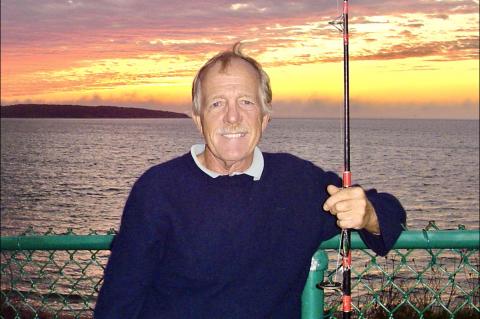“Life is just like a game.
First you have to learn the rules of the game,
And then play it better than anyone else.”
So said Albert Einstein, the genius physicist who helped usher in the atomic age with his theory of relativity. Similes aside, Einstein’s words make me think about tennis — not because of the mathematical principles involved, such as using angles to catch opponents out of position, calculating the trajectories of lobs, or applying spins, but because I’ve recently rediscovered a passion for the game — and for the game within the game — by playing in East Hampton Indoor Tennis’s 105 doubles clinics.
A basketball friend, after watching me hobble around a hoop court 10 months out from hip replacement surgery, suggested that tennis might be a safer outlet (no blindside picks) to build strength and regain mobility in the joint. I tried one of EHIT’s 105 tennis aerobics clinics that he’d recommended, and, thanks to Dennis Ferrando, and to the club’s other pros, I loved it, and haven’t stopped since.
One of the club’s Davis Cup program’s directors, and its longest-serving pro — he has an outdoor court there named for him — Ferrando, a multisport athlete as a kid who increasingly focused on tennis as his parents moved farther east from Riverhead, has been my chief mentor when it comes to appreciating 105’s fine points.
Winning shots earn you 1 point; untouched groundstroke winners earn you 5; untouched volleys earn you 10, and — ta-da — overhead smashes untouched by your opponents earn your team 20. As you can see, aggressive net play is encouraged.
There is no serving — balls to be put into play from the baseline by the point-winning teams are fed in by the pros, who keep track of the score.
We warm up before we play, to Ferrando’s energizing, piped-in music mix of ’80s and ’90s songs that lightens moods and loosens limbs. As the music plays, the clinic-takers — there are as many as 30 sometimes — form into queues and, with pros feeding balls to them, traverse adjacent courts, alternately hitting forehands, backhands, volleys, and overheads. It’s constant motion — a way to loosen up, hone the swing, and gauge where you are physically that day. Then the games begin.
Before 105, a version of King/Queen of the Court is played — another fast-moving no-serving doubles game in which court rulers are constantly challenged by would-be Kings and Queens. Two consecutive lost points by the King/Queen duo, and the challenging team replaces them. The frenetic rotating adds to the pace, and to the flow of competitive juices. It’s win-or-go-home point after point.
Teamwork and camaraderie are key to King/Queen of the Court, and, aware of this, Ferrando takes the time to acquaint himself with everyone’s skill levels, and matches partners accordingly. He also considers character when forming teams. If one player is naturally aggressive, for example, he might pair him or her with someone who is more reserved — the idea being that they each need to learn something from the other.
New teams are formed when it’s time for 105, which, as far as competitiveness goes, kicks it up a notch. Being down one moment and up the next makes 105 exciting. And there are always big moments. I remember a game in which my team was down by 18 points before the final rally only to win the match when my partner hit an overhead winner worth 20.
Ferrando, who says King/Queen of the Court is all about strategy and steadiness, thinks 105 is “a gambler’s game” that rewards risk-taking, such as leaving room for an easy passing shot in order to hang close to the net in hope of unleashing a killer smash.
Getting so worked up about winning at my age might sound juvenile, but because there is so much winning and losing in 105, the stakes are lower — there’s no time to brood over a flubbed volley or a lob you’ve whiffed because the next feed gives you a chance to swing for glory. It’s like the adage about golf: If, after playing the first 17 holes horribly, you birdie the 18th, all your thoughts of giving up the game forever vanish — you can’t wait to come back and do it again.
The other thing I like about 105 is that it reminds me of when I was young and first started to play tennis. My best friend and I would ride bikes to a local park and hit against a backstop for hours, making up different rules, being creative. We’d laugh and argue, dive for balls, and skin our knees. It was healthy, it was fun, and we never stopped moving until we were too tired to move. That part, being too tired to move, is more easily achieved these days. I tire easily — but not from 105. It’s got a hold on me. Or maybe I’m just holding on to it. Either way, I hope to see you on the court someday for a game.
—
John McCaffrey is an author and writing instructor who lives in Wainscott.





